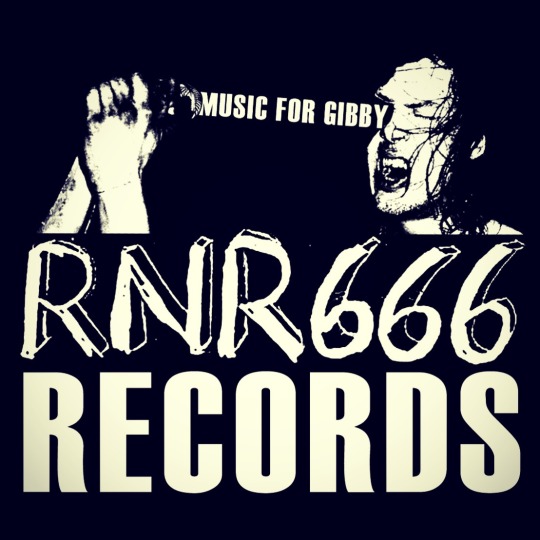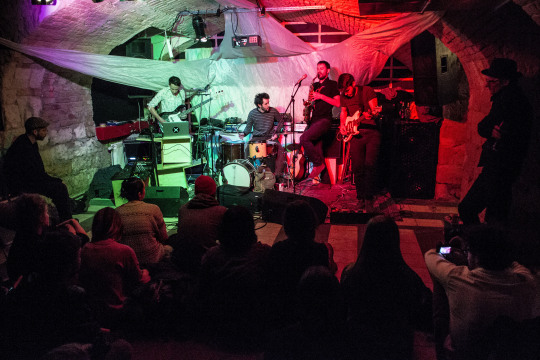#saint leidal the 2nd
Explore tagged Tumblr posts
Text
Videó: μSOUNDS
vimeo
A soros műszaundz dokumentációjaként elkészült egy klippféleség. Zeneileg megjegyzendő, hogy a krú amatőr mixer állománya miatt felvétel nem készült. Így a reprodukciónak a következő megoldásait választottuk: skogn még másnap újrajátszotta magát, Alpár megszerezte a tavalyi UH sikerének a felvételét, Saint Leidal The 2nd pedig elárulta a trekklista egy részét. Az utolsó bejátszott szám valamelyest kakukktojás, egy kvázi insider.
2 notes
·
View notes
Text
Budapest’s New Underground

Although the international reputation of the country, whose PM hailed illiberal democracy as his preferred NWO, is not the best (to say the least), there's a parallel culture that largely operates independently of state-run infrastructure, creating several microcosms with their own audiences and worldviews, implicitly turning against misogyny, discrimination, narrow-mindedness, and reflecting the techno-dystopian times we are living in at the moment. "...The goal of our underground is to create a second culture, a culture completely independent from all official communication media and the conventional hierarchy of value judgements put out by the establishment", wrote Ivan Jirous, a member of The Plastic People of the Universe, in 1975. For the purposes of this article, we will focus only on Budapest. Hungary, in general, is very centrist, even more so than its neighbouring countries. Most of the cultural happenings take place in the capital. "It is worth mentioning that to me the 'underground' seems to be an arty, intellectual, middle-class, mostly Budapest-centred, or at least city-centred thing", explains popular music scholar Emília Barna. "For instance, there is so much rap music made in the outskirts or the provinces, extremely poor areas of Hungary, scenes that thrive in these localities as well as on the internet – music that I would certainly call political because these artists directly address issues of poverty, social deprivation, criminality (gangster and prison life) etc. – yet as far as I know this music is never referred to as part of 'the underground'".

UH Fest
"A strong stage performance and powerful art are always political acts", says Krisztián Puskár, one of the organisers behind UH Fest. The experimental music staple was established at the dawn of the new millennium, taking inspiration from the now-defunct Austrian phonoTAKTIK festival. Since 2000, UH Fest (also known as Ultrahang) has staged approximately 500 performances. From noise techno, through avant-garde improv, to an hour of drone, UH Fest aims to challenge its audience's expectations and break the boundaries between various genres and generations. Thus, over the course of the week of the festival, the likes of Romanian spectralist Iancu Dumitrescu rub shoulders with Low Jack, KTL, Sote and Richard Dawson. Unlike many other similar urban festivals in Europe, UH Fest is not institutionalised, and is largely run on a volunteer basis. "To this day, we are just ordinary citizens without an institution behind us. We have a foundation, which is a legal entity, but not in terms of an office or infrastructure. It was a grassroots initiative, a family venture in the beginning, because my sister and brother-in-law were also involved", says András Nun, the organiser of the festival and one of the most pivotal figures of the Budapest underground music scene. Aside from its main event, which usually happens in late September/early October, the festival has also organised so-called "Demo" events for up-and-coming local talent, which acted as a springboard for several successful musicians such as The Death of Rave artist and Mark Fell collaborator Gábor Lázár, Opal Tapes and Lobster Theremin producer S Olbricht (whose own Farbwechsel imprint we'll discuss later), and the improv duo 12z.
OMOH
OMOH is a new addition to Budapest's queer scene, shunning the music played at mainstream gay events and embracing a more abrasive type of techno and underground house. The name itself comes from Russian police special forces and can be interpreted "as a sort of middle finger to all homophobic legislators of the world", explain the organisers, whose identity remains a mystery. "No organisers, no line-ups" is their egalitarian motto. The monthly (or so) OMOH party takes place at the top of a decaying shopping centre built in 1926, the home of the infamous Corvin Club & Bar. This sprawling venue is wedged between the 7th district, renowned for its tourist-filled ruin bars, and the up-and-coming, working-class 8th district. "Lively, chaotic, and most definitely an architectural, urban and social war zone – not postcard material. Which fits our mindset perfectly." The right-wing parties who came to prominence across Central Europe – most prominently in Poland and Hungary – championed heteronormative, Christian, conservative, nationalist values, the resonance of which can be felt in places like OMOH: "Even if club owners and managers have no problem with the LGBTQI crowd, the organisers still have to deal with the suspicion of the staff and the regulars – to put it mildly. And our audience, quite frankly, is a division of brave little foot-soldiers claiming their share of an environment which is by no means a so-called safe space."
Auróra
About 10 minutes' walk from Blaha Lujza Square, deeper into the dimly lit streets of the 8th district, the increasingly gentrified inner-city "ghetto" which is also one of the most ethnically diverse and lively areas of Budapest, lies Auróra. Located in the street of the same name, Auróra is based in an inauspicious building – you will have to ring the bell in order to get in. This family house with a cosy garden has become an oasis of alternative culture and thinking in its purest sense. Aside from its music programming – which largely centres around the weekend – the space also provides offices to several NGOs such as Budapest Pride, Roma Press Center and DrugReporter, maintained by a platform called the Auróra HUB, which is funded from Auróra's profit. The genealogy of the space can be traced back to Sirály, a former squat located on one of the busiest commercial veins of the city, at Király St 50, which was shut down in 2013. Several activist groups and a few political parties emerged from the vaults of Sirály – one of which was the collective behind Auróra (another established G��lya, a venue also located in the 8th district). Auróra's music programming is diverse, and encompasses over 40 gigs per month, ranging from free jazz, techno and punk to experimental electronics – all of this without any official state support. "The political situation doesn't let us cooperate with culture-politics at all", say Auróra's Fanni Tóth, Áron Lukács and Zsuzsi Mekler. "You can see self-censorship, fear and unpredictability across cultural institutes all over Hungary. We think the only possible way to keep this platform of NGOs and the lively discussion about issues in our country alive is to run a social centre like this, totally independently."

RNR666
RNR666, or Rock'n'Roll 666, is a music community established in 2005 by three friends from rural eastern Hungary: Csühes Pali, Lavor and Szabo, whose backgrounds include music, art and fanzine publishing. Initially begun as online radio, the RNR666 RADIO SHOW, the group widened its activities to include concert organisation, online publishing and record releasing. Their collective spirit is marked by a fiercely DIY attitude and punk-inspired ethos. They began in the era of Myspace, which connected them to the global underground and the low-budget, so-called "food-flat-and-beer bands". 10 years later, not much has changed in terms of the frugality and DIY aspect of this scene. "Lots of the venues here don't care about the fact that you want to do small, but subculturally very important events, they are just interested in profit", says Lavor as we sit in Kék Ló, an improv venue/bar in the 8th district. These days, they might do one gig per month, largely due to the lack of resources, inviting mostly foreign bands – they have to finance everything from their own pockets. This is how they released their first 7-inch, a psychedelic garage rock split between Piresian Beach, the moniker of Budapest-based singer-songwriter Zsófia Németh – who is also a member of the collective – and JC Satán. Although event promotion has shifted to Facebook, they still make posters and spread the word IRL: "I still party six days a week, so I get to talk to people that way."
Farbwechsel
Farbwechsel is a truly glocal label based on friendship and personal connections, sourcing its roster almost exclusively from local talent and organically spreading the "Budapest sound" abroad. This happened largely thanks to acclaimed producers like Route 8, S Olbricht – who established the label with Bálint Zalkai aka Alpár in 2012 – Norwell and Imre Kiss, all of whom released their debut albums on Farbwechsel. You'll often find musicians associated with the imprint jamming in each other's bedrooms, sometimes perusing vintage hardware instruments borrowed from Zoltán Balla, an avid collector and member of Farbwechsel-signed project Wedding Acid Group. Even though several artists from the label's roster have gradually begun to release music on foreign labels such as Opal Tapes and Lobster Theremin, they remain faithful and committed to the imprint that brought them recognition, and they also organise regular events in Budapest. Their sonic aesthetic has been described mostly as lo-fi house, but that doesn't do them justice. There's a sense of ghostly melancholia and longing, perhaps an aural appropriation of their home city, a place constantly hovering somewhere between the past and the present. This is most prominent in Mikolai's work, which centres around the dancefloor and transgresses it at the same time. The label roster has become stable over the last five years, with names such as Saint Leidal The 2nd, Aiwa, S Olbricht, Norwell, SILF and Alpár.

Küss Mich
Küss Mich… and follow me to a gritty basement, where we'll dance to abandon and the music will elevate us beyond our physical selves, bodies sublimating in communal spirit. Küss Mich is a romantic event – romantic in its truest, least-saccharine sense. Founded in 2008 as an irregular DJ club event at the iconic drinking den/underground basement Vittula off Blaha Lujza Square, Küss Mich is a legendary night in the context of Budapest nightlife – a place that hailed eclecticism before it was in fashion and steered clear of the corrosive irony inherent in postmodern hipsterdom. Their sonic cocktail contains a blend of DIY-synthwave, punk, Italo disco, acid and industrial – in a concert or DJ format. "The motivation was to entertain ourselves. One of us had an industrial-dark-synth-punk background, the other came from techno and acid-oriented electronic dance music. We were both tired of the narrow-mindedness of these scenes", says Krisztián Puskár who also DJs under the moniker Splatter, one of the founders of Küss Mich alongside Gábor György alias Gördön. Adopting their outsider status and subverting expectations of the then-segregated music milieu, rediscovering past gems and presenting them alongside current sounds and bands, enabled them to navigate the muddy waters of contemporary music, aided by a devoted audience. "To choose a German name was pretty strange, fun and uncool back then. Now it's totally the opposite of that. German party and brand names will vanish or become out-of-vogue, but great people will still be there to do things on their own. And us too. If there is no money in it, there must be another motivation, right?"

JazzaJ
JazzaJ is a compound word combining "jazz" and "zaj" (which means "noise" in Hungarian). The event, which aims to bridge the free jazz and noise/experimental scenes, based on improvisation, was founded in 2011. "We wanted the noise musician to meet the free jazz musician. The underground rocker to meet the folk musician. The baroque player and the avant-garde music-philosopher to meet the electronic music geek", says Ernő Zoltán Rubik, one of the organisers of the event. Over the last five years it has grown into a communal gathering of discerning listeners, who welcome anything that JazzaJ offers them. "Listening is a creative act", adds Rubik. The main task that musicians who play at JazzaJ are given is to leave their comfort zones. "We believe in no style". Recently, JazzaJ began to invite musicians to be curators – each month a musician puts together the line-up, which sometimes creates rather interesting and surprising juxtapositions. This way, they've staged "hardcore-like nights" courtesy of Balázs Pándi, video operas with Miro Tóth, baroque and noise improvisation with Albert Márkos, and 12 saxophonists running around the room via Gergő Kovács. The JazzaJ community is sourced from the sprawling local scene, but remains tightly connected not only to neighbouring countries, but also the European and international scenes. "Our way of promoting improvisation as an act of freedom and tolerance, listening and presence, is already political without naming it so. There were times when we felt that for some people, this was a weekly refuge, a hideout from everyday cruelty and ignorant aggression taking place on social and political fields, or the streets." (photo: Attila Nagy)

T+U
T+U stands for Technologie und das Unheimliche, or the uncanny, the strangely familiar – that which repulses and attracts you at the same time. Established in 2014 as a publishing project and cross-disciplinary movement by Mark Fridvalszki, Zsolt Miklósvölgyi and Márió Z. Nemes, T+U is located somewhere between Berlin, Budapest and Leipzig. Their leitmotif is an exploration of the confrontation between the age-old dichotomy: the human condition – its various manifestations and cultures – and technology, through theme-based issues and events. Music plays an important role in their modus operandi. They have a regular radio show on legendary Tilos Rádio and create guest mixes, employing a specific sonic aesthetic that chimes with their ideology: dark, technoid, dystopian. Some of T+U's members have left Hungary for personal and political reasons. "Within the recent years, mostly due to the socially and morally harmful cultural politics of the current political establishment, there is less and less air for progressive art and subversive thoughts", says Zsolt Miklósvölgyi via email. "This catastrophic hedge-hop mainly caused by the anti-intellectualist, reactionary attitude of the ruling right-wing populist party and its substandard cultural myrmidons, obviously forces many of us into 'exile'. But within our techno-capitalist era, the image of 'living in exile' no longer means that you exchange one geo-cultural location for another, but you are in constant transition. You are not only characterised by the place you are from, but rather by the way you are rewriting these already-existing cognitive landscapes and cartographies."
Drrpnc
If you are a musician or into underground rock and extreme metal in Budapest, you will probably have passed through Keleti Blokk and the adjoining Dürer Club at some point. The sprawling complex neighbours the green oasis of the city park, whose integrity is threatened by a huge makeover that, for the foreseeable future, may replace much of the greenery with shiny concrete. Drrpnc is a secret cellar somewhere in the underbelly of the aforementioned space. A cross between a rehearsal room and a gig space, Drrpnc has become one of the city's most prominent havens for the punk/hardcore and extreme underground metal. Needless to say, the modus operandi of their activities is strictly DIY. "We have always had some challenges, such as leakage, electrical damage, etc., but the Hungarian scene is a community, so we can solve all of our problems through our common strength", says Adam Mjöl. The future remains uncertain. "This building, where we are now, will be probably demolished, so we have to start looking for a new place."

Davoria & Külvárosi Techno
The seeds of Davoria were sown around the year 2000. The collective began organising sound-system parties in the summer, as part of the then-thriving freetekno scene and its annual summer teknival gatherings. Ever since their beginnings they have always been part of both worlds – throwing events at regular clubs as well as the outdoor, illegal parties. These days, Davoria's monthly events take place at Müszi (situated in the 8th district at the aforementioned Corvin shopping mall), a space for alternative culture that also includes the offices of the civil watchdog Atlatszo.hu, as well as Auróra. The sonic identity of the event remains faithful to their beginnings: hardcore techno, noise and experimental electronics. "We call our parties tekno, because we feel that this term is open enough to represent different kinds of genres, from tekno to experimental music", explains Davoria organiser Péter Márton, who also produces uncompromising techno (or tekno) and noise under the respective monikers Telesport and Prell. Davoria also host a stage at the now-legendary underground techno event Külvárosi Techno (Suburban Techno), which takes place several times a year in the industrial premises of the large studio space and now-defunct venue R33. Ideologically, their stance hasn't changed over the last fifteen years. "We try to show that even in a commercial world, you are capable of doing productive, good things while keeping your freedom."
Originally published in Glissando magazine #30
Lucia Udvardyova
24 notes
·
View notes
Text
Müskinn
Müskinn kollekcióbemutató + Galactic Jackson, Saint Leidal The 2nd @TELEP (FB)
Erasmus Dark Rave #4 : Techno & Psytrance Edition @Corvin Club (FB)
0 notes
Audio
originally recorded for the short movie "the plant"
0 notes
Audio
Saint Leidal The 2nd - I Do What I Wanna Do (Eight o Eight o Clock)
0 notes
Audio
My unreleased version of Andras Leidals perfect dreamy track Body Bubble 2. Full release "Future Tiberian Baths" is OUT today (28.10.) at Farbwechsel label. http://farbwechsel.bandcamp.com/album/future-tiberian-baths Thanks Andras for this cooperation!
2 notes
·
View notes
Text
Saint Leidal The 2nd - Future Tiberian Baths (FARB010 / FARB010-C) - Oct 28, 2014
0 notes
Audio
Lay back, put on some funky music, paint some happy trees, whatever! It's Friday, and Saint Leidal The 2nd has got the track that'll help you sit back and unwind.
1 note
·
View note
Audio
0 notes
Text
VILS #2: Saint Leidal The 2nd
VINYLS I'D LIKE TO SELL: Mmmnmnm's trashcast is back with its second edition, this time with Saint Leidal the 2nd's erotic shaman disco, our Xmas 'glühwine' for you. Every record on sale!
SALE LIST (by track as ordered in the mix):
Fridge: Of EP (Dub) Leftfield: Swords EP (To Rococo Rot Remix) Thomas Fehlmann: Blow-up Chimp EP Superfrühstück (TFlowingrmx) Laika: Good Looking Blues LP: Uneasy Donna Regina: Star Ferry EP (Original mix) Contriva: Foxy EP: Shadow (Mo Mix) James Figurine: Eleven Numbers 12": Apologies (DJ Koze Remix) Control D: Vision in the Mirror EP (Instrumental) Bronski Beat: The Age of Consent LP: Smalltown Boy The Mike Flowers Pops meets Aphex Twin (Lo Recordings) Simple Minds: New Gold Dream LP: Promised You a Miracle Morrissey: Viva Hate LP: Everyday is Like Sunday
1 note
·
View note
Text
Larm Saint
J. Mono live, Saint Leidal The 2nd, Imre Kiss & Max Sinclair @Lärm (FB)
0 notes
Audio
SAINT LEIDAL THE 2ND: Vynegar
1 note
·
View note
Audio
Underwater Life
1 note
·
View note
Audio
Saint Leidal The 2nd - Everytime I Turn Left (2012)
1 note
·
View note
Photo

Teen Daze, Brothertiger, Saint Leidal The 2nd, HOLALO + Popmeter DJ set
a HOLALO nyit a mikroblogok felé, kapásból egy menő nyereményjátékkal! a posztot rebloggolók között egy két személyre szóló jegyet sorsolunk ki az április 25-i koncertre! hajrá!
április 20-án sorsolunk.
45 notes
·
View notes
Text
Céh
Tod Cklorox And His Band, CÉH, Létrázók @Auróra (FB)
Dehidratált Fejek, Fake Shakes, Mayberian Sanskülotts, Saint Leidal The 2nd @Gólya (FB)
0 notes